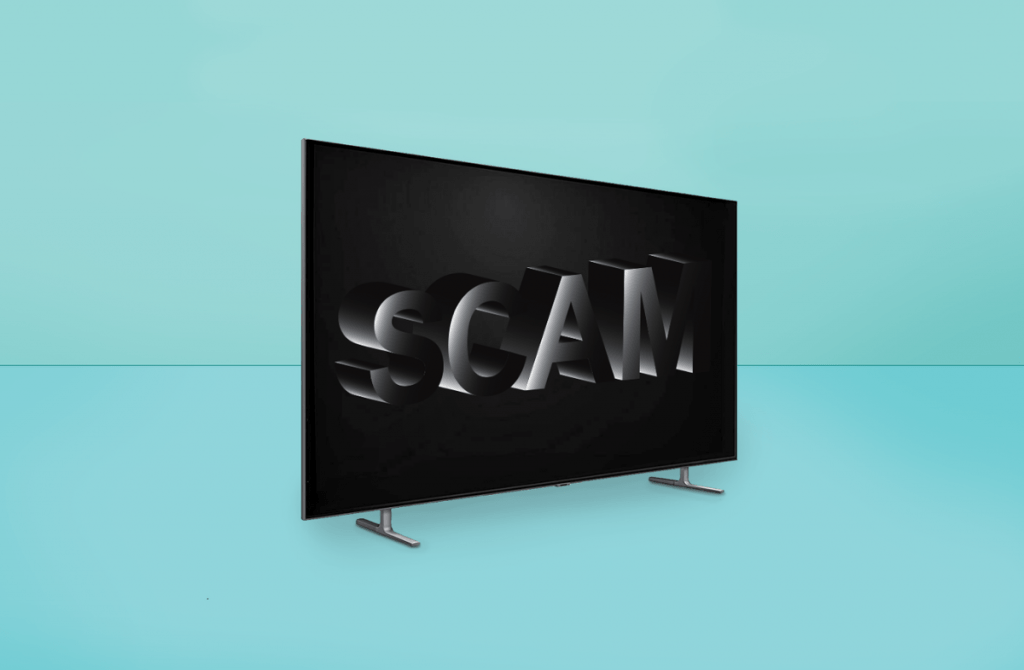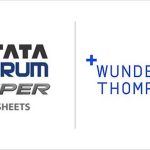India has been blowing up on the news of a few TV channels caught paying bribes to be rated high.
… Back then India didn’t have many satellite dish households. The majority got their TV from the friendly neighbourhood cable mafioso. Most TVs couldn’t carry 100s of channels and we wanted to be on prime bands so people could watch us…

A quick background: In the early 1990s, I was at Ogilvy Hong Kong and, as a side project, helped MTV launch in India (the “Quickgun Murugan” times). I then moved to the US.
I was hired from the US in 1999 to come back to India to try turn around MTV’s rival Channel V (the “We Are Like This Only” times). I ran Channel V till its absorption into Star TV in 2001.
As we geared for the re-launch of Channel V in 1999, we agonized about distribution.
Back then India didn’t have many satellite dish households. The majority got their TV from the friendly neighbourhood cable mafioso. Most TVs couldn’t carry 100s of channels and we wanted to be on prime bands so people could watch us.
This meant the top 20 or 30 ‘slots’ on the TV. The distribution team had to be nice-nice with hundreds of cable mafioso so they could get us these slots.

We’d lined up advertisers for the re-launch who liked our new programming (“not just a music channel but a youth channel”). But they all asked, “What do you think your TRPs will be?” Of course, the higher we rated, the more they could spend on us.
Now a TRP is a Television Rating Point. A TRP of 10 means 10% of people with a TV in your demo or geo are tuned in to your channel right now. That’s huge.
MTV and Channel V were niche channels. A TRP of 1 was good enough for us. In contrast, the big guys with mother-in-law / daughter-in-law soaps earned TRPs of 10 or more. They were the demi-gods. We were small fry.
Now MTV knew we were up to a re-launch and we suddenly saw their ratings spike. A show got a TRP of 10 from South Mumbai during prime time. This shocked us.
It was an average show, how was this even possible? Did we judge the audience horribly wrong? Were we going to fail miserably?
An aside: the head of MTV India then is a friend, and he now heads the TV ratings agency under siege, BARC, and this may just be a coincidence.
In a meeting our distribution guy piped up – “Boss, why worry? Tell me what ratings you want, I’ll get it for you. We’ll beat MTV.” These didn’t sound like empty consoling words. I took him aside: WTF do you mean?
He said – just clear an extra Rs. 200,000 a month (US$ 4,000 then), and I’ll get you the ratings you want. Astounded, I dug in, and here’s what I found.

The ratings were measured by what’s called PeopleMeters, then owned by a company called TAM – now Nielsen – which in turn was owned by WPP.
A PeopleMeter was a device attached to a sample of TV sets. It automatically tracked what the TV was tuned to at different times and sent this info to TAM, which tabulated and released it every week as TAM ratings. All those homes got paid for this by TAM.
At that time there were just 2,000 PeopleMeter homes in India. And those determined what was then US$ 2 billion of Indian TV spend. In effect, each meter determined $1 million of spend.
… So, essentially these fixers sat, schedule in hand at homes across India, switching to various channels at various times, based on whoever had ‘fixed’ whatever slot they wanted to rate in…
Now, one assumed these sample home locations were a secret. But my distribution guy said, it’s not. “I’ll get you a list of all of them” he said. WOW!
Was it just him or other channels knew too? “All of us have them” I was told. Double wow.
“What now?” I asked. There are two ways to get the ratings you want, I was told. One, be nice to the homes – send them freebies etc and they’ll tune in. Many channels do that. But there’s a better way.
I listened. Now many of these homes knew how important the metered set was and basically placed that set and its meter in a different room, giving the remote control to the local cable fixer dude. While the home actually watched whatever they wanted – on a different TV gifted by the friendly ecosystem, making a mockery of the measurement process.
So, essentially these fixers sat, schedule in hand at homes across India, switching to various channels at various times, based on whoever had ‘fixed’ whatever slot they wanted to rate in.
Just $4,000 a month, I was told, and you’ll get the ratings you want. Given that we were hoping to do US$4m a year back then, it was a bargain.
Tell me more, I asked. See, I was told, 2,000 homes in India means 200 in Mumbai. 200 in Mumbai means 20 in south Mumbai, 20 in the suburb of Bandra / Khar and so on.
It just takes $1,000 to fix one meter. $4,000 will fix 4 of them for a month. Or fix 8 for half the time. 8 meters meant ratings of 4% – an enormous number for Mumbai.
So, I was told, pick your geo and pick your demo SEC A/B and there’s no big deal. For those who ask: Nope, we didn’t take up this method at all.
… It’s a perverse incentive. An agency’s role is to make client’s marketing more efficient – yet you’re compensated for making it less so. Clients got wise and started cutting commissions. They fell to ~1%…
My. Mind. Was. Blown.
I first took it to the advertisers: Coke, Pepsi, Unilever. But they didn’t want to hear about it.
They didn’t care about the reality behind ratings. They just wanted a paper trail to justify their spends. Love the sausage, ignore the sausage factory, I guess.
Their media agencies Mindshare, GroupM and such swore by the ratings. Conveniently, their owner WPP owned the ratings company.

But now: a segue to media buying agencies. Once, they took 15% of ad spend as commission. The more you spent on ads, the more they made.
It’s a perverse incentive. An agency’s role is to make client’s marketing more efficient – yet you’re compensated for making it less so. Clients got wise and started cutting commissions. They fell to ~1%.
Now media buying agencies struck deals with the TV channels. Tell the advertiser we are getting only 1% commission.
But kick us back another 5% or 10% under the table. This cheating is global, by the way.
The mechanism is simple. One is a “credit note”. Say an ad buy costs $10 million. TV channel sends invoice to agency for $10 million and this includes commission of $100,000 or 1%. Agency sends this to client and says please pay $10 million. Client pays, thinking agency is only making $100,000 out of it. But TV channel secretly sends credit note to agency saying “Here’s an credit of $900,000!”. So agency keeps $100k from client and $900k from channel and pays a net of $9 million, earning $1 million in the process.
And it could be even more insidious as some of my colleagues suggest.
… It’s clear when you look. India has 3 or 4 large media buyers – parts of global ad groups. They each boast of handling spends of over $1 billion. Do the math…
The offer to TV channels from this agency group was – pay us a higher kickback, and we’ll make sure your channels rate better on the rating system we own.
Now the Indian TV ad industry is US$3.5 billion today. Print is another US$2.5 billion. Outdoor adds US$1.5 billion.
Undocumented kick-backs taken by large agencies can easily amount to 10% of this – over $700 million a year. It’s clear when you look. India has 3 or 4 large media buyers – parts of global ad groups. They each boast of handling spends of over $1 billion. Do the math.
Given official commissions are <1%, they each should be earning less than US$10m a year or US$800,000 a month.
But look at their balance sheets. Or see their employee counts on LinkedIn – each has over 800 people.
Given industry salaries, you cannot support 800 employees on US$800,000 a month.

It won’t cover salaries, let alone rentals, taxes, overheads or entertainment bills, money sent back to head office and still end up showing profitability.
But I digress. The world was indeed going WPP’s way as it owned TAM.
Meanwhile, TAM dragged its feet to increase the sample size, and over the next 15 years took it from 2,000 homes to just 12,000.
Basically, a drop in the ocean of 250 million Indian households. A 0.005% sample
… In this game of thrones WPPsaw themselves losing control, quickly pivoted and sold TAM’s 12,000 fixed meter homes in return for owning 49% of BARC. But you can see the system is just as ‘fixable’ as before…
Then, channels and non-WPP agency groups in India wanted to neuter WPP. They formed BARC in 2015.
While it was a power move their public defence was a need to vastly increase sample size. They now have 33,000 metered homes. A 0.01% sample.
In this game of thrones WPP saw themselves losing control, quickly pivoted and sold TAM’s 12,000 fixed meter homes in return for owning 49% of BARC.
But you can see the system is just as ‘fixable’ as before. 33,000 metered homes mean 3,300 in Mumbai. Which mean 300 in a suburb like Bandra / Khar.
To get a TRP of 1 in this prime demographic, all that a TV channel has to do is to fix exactly 3 homes. That’s it.
And if you want to do it at scale across India, all you have to fix is about 300 homes.
… Sure. Killing the commission system at agencies is one. For instance, Google and Facebook don’t pay kickbacks, so you won’t see as much of them in large agency media plans as you should. You’ll instead see strange ad networks. When you ask for a justification you won’t get the truth that the agencies are probably earning 50% undocumented commissions there…
What difference does this make? Enormous.
The cost of fixing 300 homes is around US$150,000 a month. Or US$1.8 million a year.
Republic TV revenues in 2018 were US$22 million. The India Today group did US$ 90 million that year. You can see why fixing meters is a no-brainer.
Why bother with quality of programming and journalist salaries when just fixing meters gives you a 1,400% ROI? Just $1.8 million of payments-for-ratings – call it bribes if you like – can fix US$ 22 million of revenues.
This is a basic problem of the TV industry.
Are there solutions?
Sure. Killing the commission system at agencies is one.
For instance, Google and Facebook don’t pay kickbacks, so you won’t see as much of them in large agency media plans as you should.
You’ll instead see strange ad networks. When you ask for a justification you won’t get the truth that the agencies are probably earning 50% undocumented commissions there.
Disclosure, I own a stake in an advertising firm Pinstorm that takes a flat fee and zero commissions for its media placements. There are others, but too few.
Having a truly independent metering system for TV is another. No publisher or agency should own this. Even BARC is owned by a publisher – agency nexus.
Channels going OTT is a third. We don’t yet have great metrics here – and many, like Netflix, have gone completely ad-free.
Fourth, smart brands will place different messages on channels to see which are being seen and responded to.
You might imagine that it’s 2020, we launch spacecraft towards Mars, we are this incredible digital-driven planet, and all this minor crap must have already been sorted out by now…Short answer: NO.

Mahesh is an ad veteran and venture capitalist. He’s worked with FCB, Grey, Ogilvy and CKS in Asia and the US, where he helped design and launch Amazon, Yahoo and others globally. He founded Pinstorm in 2004 and has also funded leading new economy firms like RedBus, Carwale, AgencyFAQs, Chumbak, Doolally and Satellize.
MARKETING Magazine is not responsible for the content of external sites.










